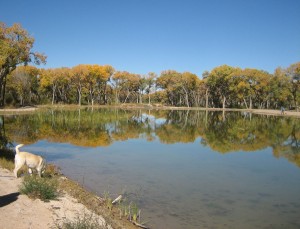I live in a suburban neighborhood that dates to the early 1950s, when this swath of mesa east of the Rio Grande was cleared for homes. It’s almost certainly at that point that the city of Albuquerque, which then managed the water utility, laid a grid of pipes to bring water to the area.
Carl Smith, in his new book City Water, City Life, talks about the importance of that gridding in the evolution of American urban life:
To be reliant on a network of water pipes defined more viscerally than did walking or riding through streets the condition of being “on the grid,” that is, within a human-made world separate from nature. Given how radical the shift was from fetching water from a natural source to taking it from a tap, it is remarkable how quickly city people came to view the new state of things as normal and, for lack of a better word, natural.
I came along long after that moment in history, but I can easily grasp what Smith lays out as a corollary.
Down in the bosque, the riverside woods that flank the Rio Grande here in Albuquerque, is a pond built by federal wildlife folks to stand in for habitat lost when the river was pinned by dams and levees. It’s one of my favorite “natural” spots to go for a walk. Here’s Smith:
Meanwhile, the American nation’s presumed identification with nature, as well as the timeless concern with the dehumanizing tendencies of urban life, drove efforts to protect or restore the presence of the natural world in the city, even if that presence was nearly as fabricated as the grid.
Sound about right to me.


Pingback: Another Week of Global Warming News, June 9, 2013 – A Few Things Ill Considered